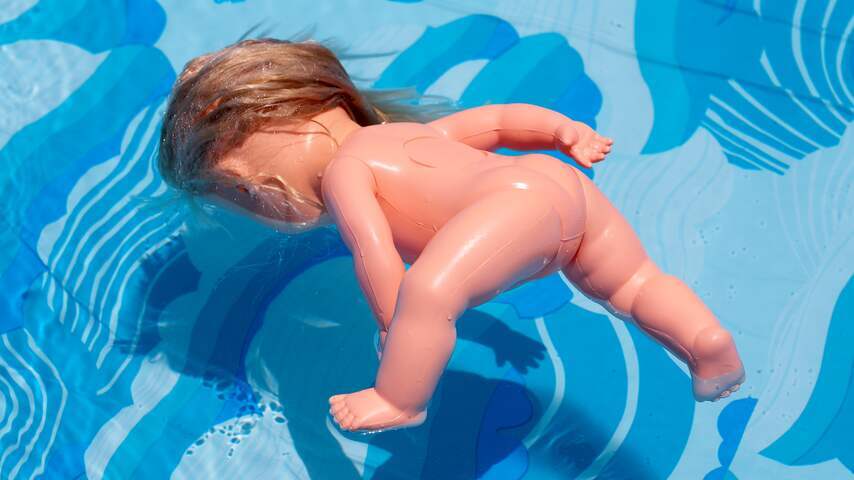
Every summer, children who cannot swim go under, and every summer that leads to young drowning deaths. Many of them are toddlers, and their death can be prevented by basic knowledge about drowning. This is what you need to know.
A toddler of one or two years does not understand the dangers of the water. He goes under, and suddenly the world is very different. Quiet, peaceful, no noise. Such a toddler marvels at the silent underwater world and simply sinks to the bottom, where he or she soon becomes unconscious. That is the gruesome reality of drowning in young children, and however unpleasant – knowing that it works that way saves lives.
Mieke Cotterink, movement expert and Child Safety expert at VeiligheidNL: “If you don’t have children yourself, or they are still a baby or much older, then this information is not relevant to you, so you don’t remember it.” That is why the message that children drown silently must be repeated every year, according to the knowledge center.
Cotterink. “Young children don’t scream, don’t come up sputtering and then go under again. They are not panicked, they don’t sound the alarm. They only do that when they are much older and they are struggling to get up. Toddlers don’t realize they are in danger and don’t know what to do to stay alive.”
Leave your phone in your bag
Another hard-to-digest message: when such small children drown, the cause is often parental inattention. Because they underestimate the danger, overestimate their attentiveness, and get distracted.
“Leave your phone in your bag so you’re not tempted to check something. Of course, you want to take a nice photo of your splashing child, and that thing is stuck to all of us. So if you want to open your camera, there are messages there and that distracts you. Just don’t take it out of the bag.”
Starting swimming lessons early is useless
The drowning figures for 2023 will not be known until the end of this year, says VeiligheidNL. The most current hospital figures for 2022 show that young children are most often the victims. In 2022, there were ninety hospital admissions related to drowning of children aged zero to seventeen years. Seven of them died as a result.
In 2022, three quarters of the admitted drowning victims were five years or younger. And of the deceased children in the period from 2018 to 2022, more than half of the victims were five years or younger.
Young children lack the strength and coordination to save themselves, says Cotterink. “Letting your child take swimming lessons very early, before the fourth year, is not a solution. They can’t learn it then. Only around the age of 4.5 and five do they have that strength and coordination. They also go to school then and are already better used to learning something in a group.”
There are water familiarization lessons where young children get acquainted with water. “That is very nice as a starter for real swimming lessons. But they are not safe because of it.”
Golden rules for natural water
With a diploma also not: from a safe, heated swimming pool with a lifeguard to swimming in the open sea with riptides, waves and noise, or a river with a current, that is quite a difference.
Adhere to some golden rules in natural water, says Reddingsbrigade Nederland. These are unfortunately not generally known, according to a spokesperson, but you do need to know them. Pay attention to the (beach) flags and absolutely do not enter with a red flag. If you swim in the sea, make sure you can still stand and swim in the places where lifeguards supervise. Pay attention to the temperature of the swimming water. The water in the North Sea is on average 18 degrees in summer, so you can become hypothermic while swimming.
Swim wings, vests, flotation suits and the like: you put them on every child who cannot swim. Make sure the buoyancy is high on the body, says Corterink, so around the shoulders and upper arms. This keeps the head above water. “Swimming toys such as tires and air mattresses are best not used at sea, because there is a risk of drifting.”
A bath in the garden, the ditch behind the house: these are the places where most children drown. “Stay close to your toddler – so close that you can touch him or her. They can drown in a layer of 10 centimeters.”